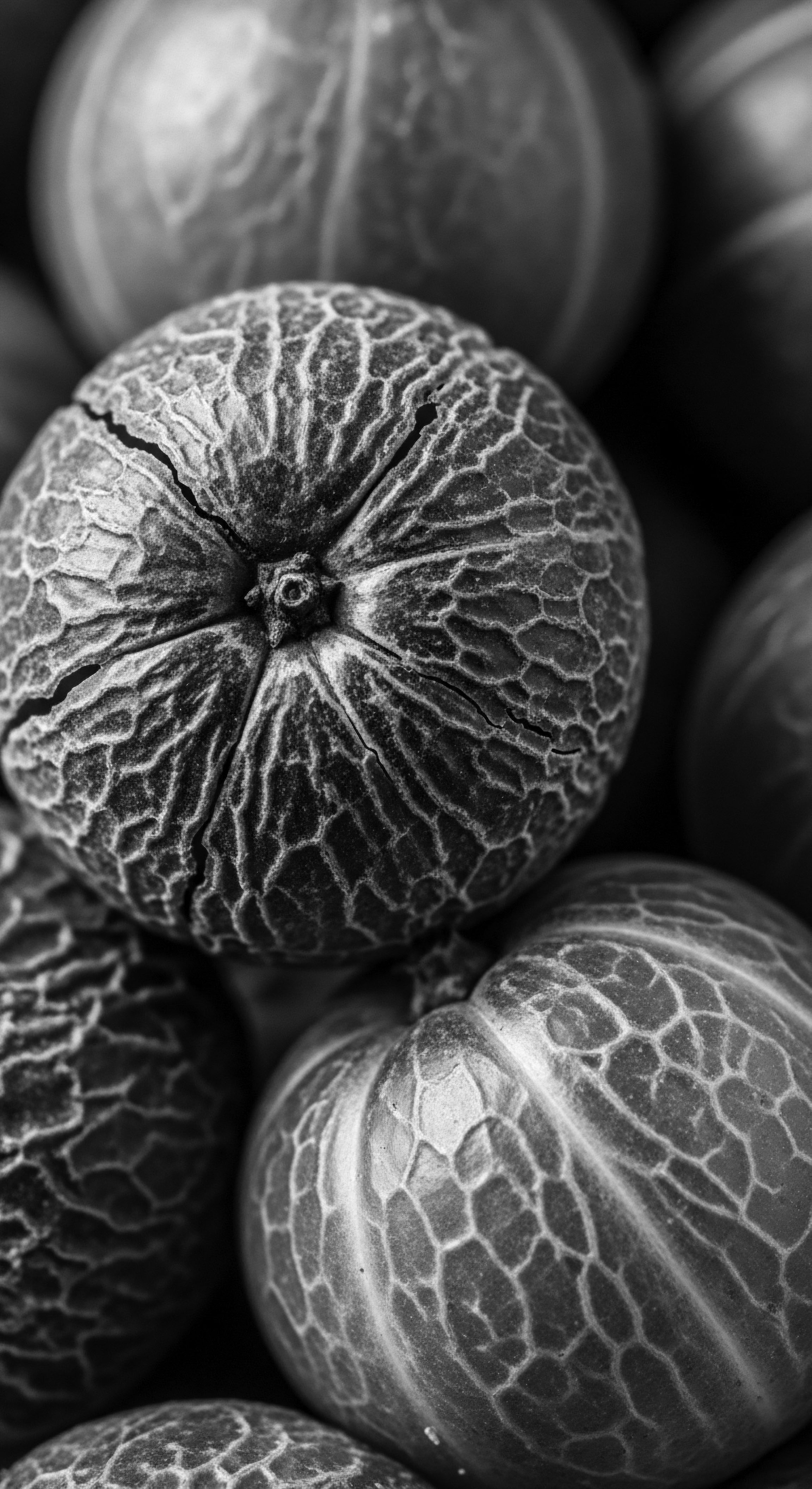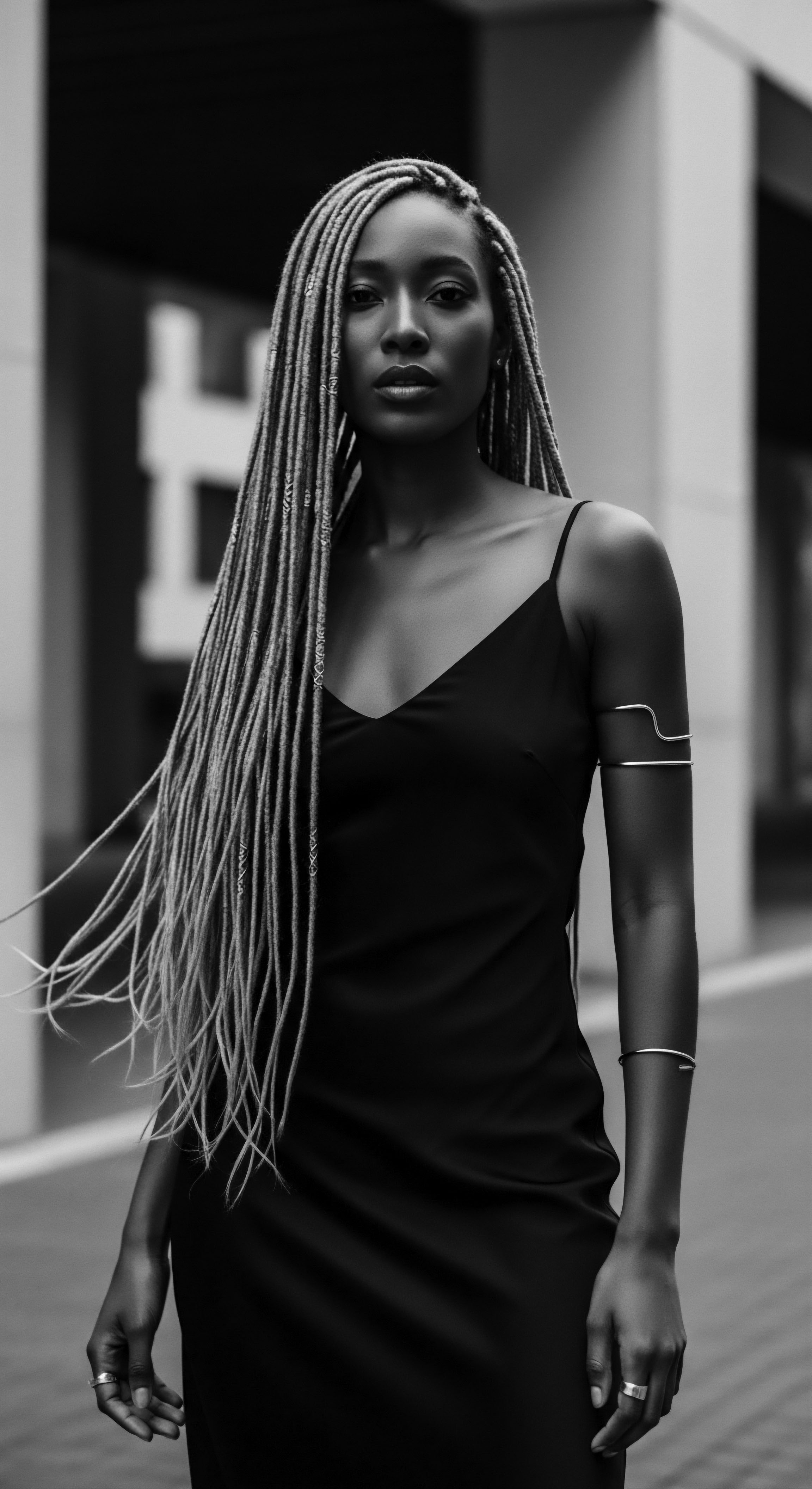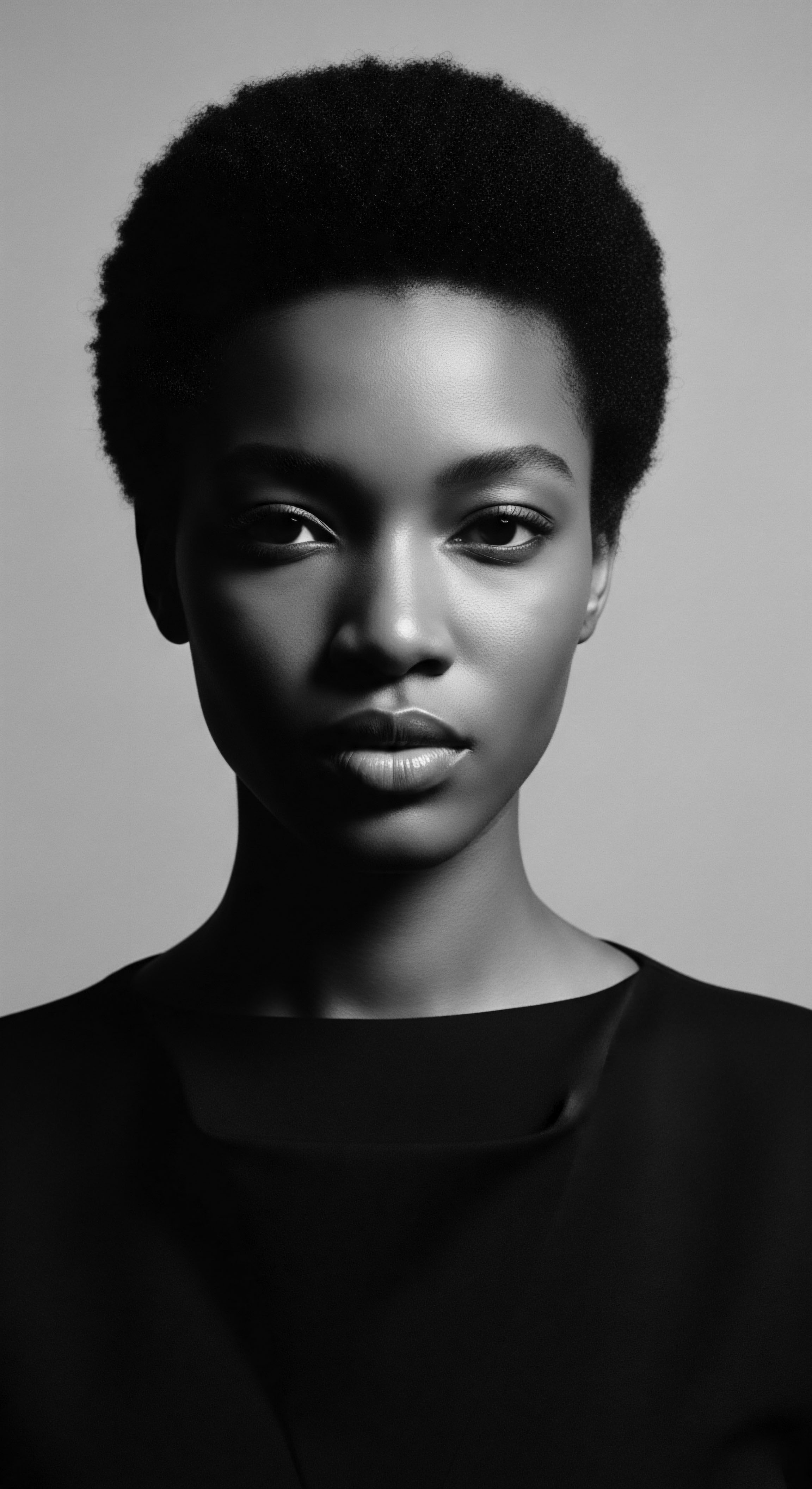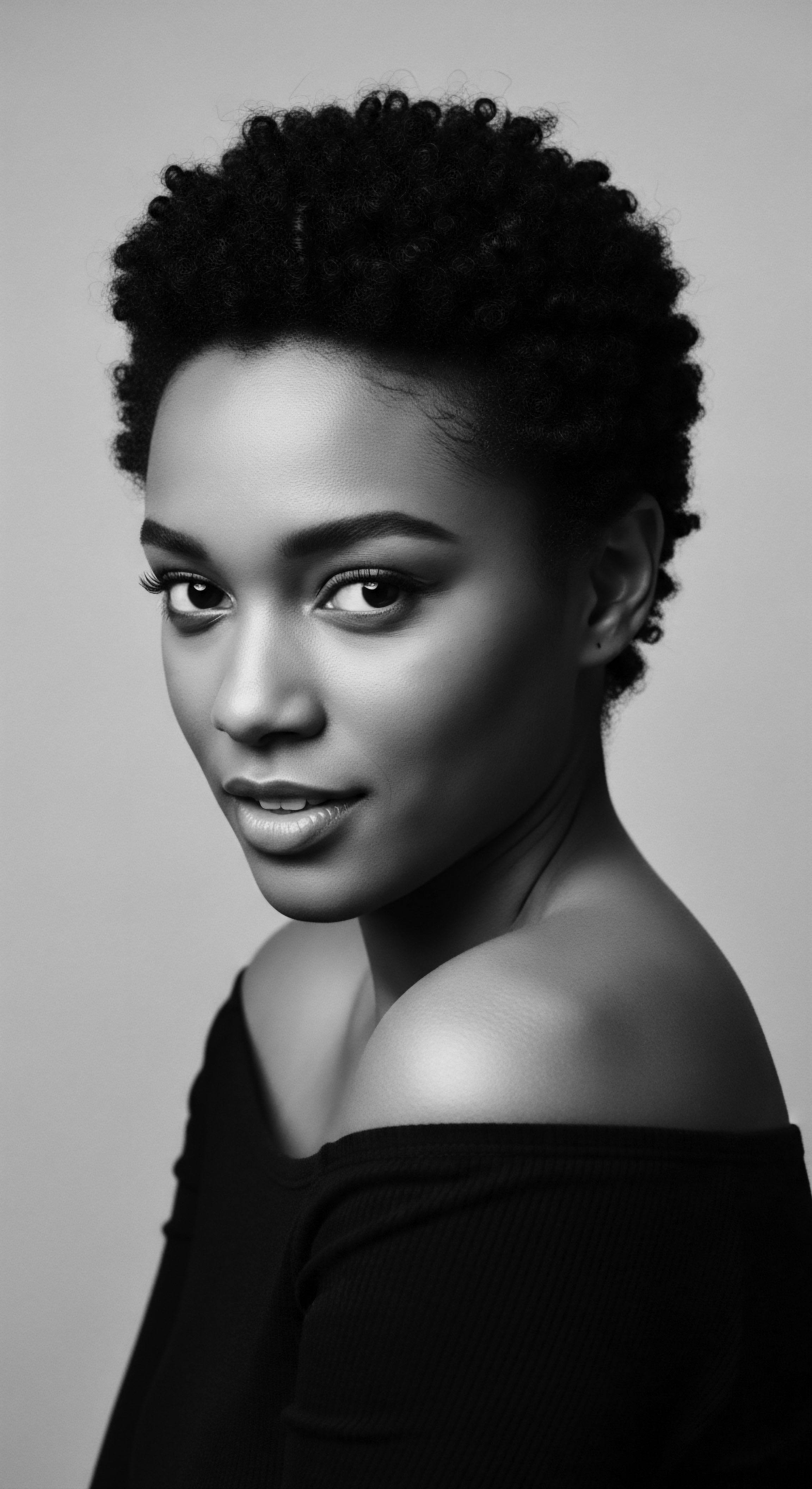
Roots
The whisper of heritage, carried on the winds of time, often settles in the most unexpected corners of our being—the very strands that crown our heads, the textures that speak of ancestral journeys. For those who walk in the lineage of the African diaspora, our hair is more than mere adornment; it is a living archive, a continuous conversation with those who came before. Within this profound dialogue, the unassuming presence of Palm Oil emerges, not as a static ingredient, but as a dynamic participant in a beauty heritage that stretched across continents, adapting its very essence to sustain spirit and strand.
Consider the ancient wisdom held within the oil palm, Elaeis guineensis. Its origins trace back to the dense, verdant forests of West and Central Africa, a region where this remarkable plant was not simply a crop, but a lifeblood. For millennia, African communities understood palm oil’s multifaceted gifts ❉ sustenance, medicine, and an indispensable element in beauty rituals.
It was a primary conditioner, a sealant, a source of profound moisture for hair textures that required both nourishment and respect. Before any transatlantic voyages, before the echoes of distant shores, palm oil was already a cornerstone, a tangible link to the land and its deep, abiding knowledge.
Palm oil, originating in West and Central Africa, became an ancestral staple for hair and skin care across the continent.

What is the Elemental Composition of Palm Oil?
From a scientific lens, palm oil contains a blend of saturated and unsaturated fatty acids, primarily Palmitic Acid, a saturated fat, and Oleic Acid, a monounsaturated fat. This particular composition allows it to exist as a semi-solid at room temperature, a quality that proved uniquely beneficial for hair care. Its rich concentration of vitamin E, specifically tocotrienols, also offers antioxidant qualities, providing protection to hair from environmental stressors.
These elements, though not always articulated in scientific terms by ancient practitioners, were intuitively understood for their protective and conditioning capabilities. The ancestral wisdom observed the oil’s texture, its ability to coat and seal, and its resilience against degradation.
The application of palm oil to textured hair was not a random act. It was a deliberate, observed practice, rooted in generations of empirical knowledge. The dense, often coily or kinky textures of African hair naturally resist the even distribution of sebum from the scalp, leading to a tendency toward dryness.
Palm oil, with its viscosity and emollient properties, provided an external layer of lubrication, effectively mimicking and supplementing the scalp’s natural oils. This helped to reduce friction between individual hair strands, which is a key factor in preventing breakage in more fragile hair types.

How Did Early Practices Influence Its Use?
Across various West African societies, the preparation and use of palm oil were interwoven with communal life. Women would gather the oil palm fruits, a labor-intensive process, and then extract the oil through traditional methods involving boiling, pounding, and pressing. This was not a solitary task but often a collective ritual, fostering bonds and sharing knowledge.
The oil, often tinted a vibrant reddish-orange from its carotenoid content, was then applied liberally to hair and skin, sometimes mixed with local herbs or clays, creating personalized formulations tailored to specific needs or ceremonial purposes. These practices laid a foundational understanding of palm oil’s utility that would, in time, travel far beyond its native soil.
- Ceremonial Anointment ❉ Palm oil often played a role in rites of passage, symbolizing protection and blessing for individuals.
- Daily Care ❉ Applied regularly to hair and scalp to maintain moisture, reduce breakage, and promote overall health.
- Herbal Infusions ❉ Mixed with various indigenous plants to enhance its medicinal or cosmetic properties.

Ritual
The transatlantic crossing, a brutal severance from homeland and tradition, presented an immense challenge to the continuity of cultural practices. Yet, in the face of unimaginable hardship, enslaved Africans carried with them the memory of their heritage, a vibrant tapestry of knowledge that included deep understanding of botanicals and body care. Palm oil, a physical representation of their ancestral land and its wisdom, became an unexpected commodity in this new, harsh reality. It was a testament to human resilience that this oil, often imported as an industrial lubricant or food source, was re-appropriated and adapted for its familiar role in beauty rituals, particularly for the care of textured hair .
The adaptation of palm oil within the diaspora’s beauty heritage was a quiet act of defiance, a way to maintain connections to self and ancestry when so much was stripped away. In places like the Caribbean, Brazil, and the American South, where the oil palm itself might not have flourished, the imported oil became a precious commodity. Its physical characteristics — its ability to solidify and its rich emollient quality — made it remarkably versatile, echoing the care practices from the continent.

How was Palm Oil Integrated into Diasporic Styling?
For those tending to textured hair, which craved moisture and slip for detangling, palm oil emerged as a hero. It provided the necessary glide for finger-combing, plaiting, and twisting, techniques that formed the bedrock of protective styling in the diaspora. These styles—cornrows, twists, and various forms of braiding—were not merely aesthetic choices. They served crucial functions ❉ protecting delicate strands from environmental damage, reducing breakage, and minimizing daily manipulation.
Palm oil, applied before or during the styling process, enhanced the longevity and integrity of these intricate works. It coated the hair shaft, reducing porosity and helping strands retain moisture, a vital function in environments where hair might otherwise dry out quickly.
Beyond its functional role, the act of applying palm oil was often a communal affair, a quiet ritual shared among women and children. This intimate exchange of care became a conduit for passing down oral histories, styling techniques, and ancestral knowledge. It fostered a sense of community and identity, even in the most oppressive circumstances. The very act of styling hair became a space of solace and cultural affirmation.
The re-appropriation of palm oil for hair care became a quiet act of defiance and cultural continuity within the diaspora.

What was the Role of Palm Oil in Creating Protective Styles?
The resilience of textured hair, often seen as challenging by those unfamiliar with its needs, was understood and honored within diasporic communities. Palm oil served as a key ingredient in maintaining its health and beauty.
Consider the case of the enslaved communities in Suriname, whose hair practices have been meticulously documented. Anthropologist Sally Price, in her extensive work, records how the Maroons of Suriname developed sophisticated hair care systems, often relying on traditional ingredients, where available, or adapting to new ones. While direct import of palm oil from West Africa might have been limited, the knowledge of how such an oil functioned was not.
When local alternatives with similar properties could be found, or when imported palm oil became accessible, its application to hair for moisture and protection was instinctual, a heritage practice re-born (Price, 2011). This historical example shows the deep cultural memory that guided the use of emollients in hair care.
The use of palm oil in protective styles meant:
- Reduced Breakage ❉ The oil minimized friction during manipulation, preserving hair length.
- Moisture Retention ❉ It sealed moisture into the hair shaft, guarding against dryness.
- Style Longevity ❉ Applied to braids and twists, it helped maintain the integrity of the styles for longer periods.
Even as new cosmetic ingredients became available over centuries, the foundational knowledge of how oils like palm oil served textured hair persisted. This deeply ingrained understanding informed subsequent generations, influencing DIY concoctions and the criteria by which commercial products were later judged within Black and mixed-race communities.
| Traditional African Practice Direct application for moisture and shine. |
| Diasporic Adaptation and Purpose Hair sealant for braids and twists; a key ingredient in homemade hair greases. |
| Traditional African Practice Used in pre-wash treatments and scalp massages. |
| Diasporic Adaptation and Purpose Nourishing scalp balm to alleviate dryness and promote comfort. |
| Traditional African Practice Combined with herbs for specific hair benefits. |
| Diasporic Adaptation and Purpose Mixed with local botanical extracts or other available oils to enhance properties. |
| Traditional African Practice The enduring presence of palm oil in diasporic hair care highlights a tenacious preservation of ancestral beauty wisdom. |

Relay
The journey of palm oil within the African diaspora’s beauty heritage is not a static historical record; it is a living, breathing current, adapting and flowing through generations. From its initial role as a fundamental anointing agent in West Africa to its pragmatic adaptation in the diaspora, its significance has evolved, even as its core function – nourishing textured hair – remains. Today, as communities rediscover and reclaim ancestral practices, palm oil continues its relay, carrying forward legacies of care, identity, and ingenuity.
The contemporary resurgence of interest in natural hair care among Black and mixed-race individuals has brought renewed attention to traditional ingredients. Palm oil, though sometimes met with scrutiny due to environmental concerns surrounding its commercial production, holds an undeniable place in this discussion. Its efficacy for specific hair types, its historical grounding, and its cultural weight cannot be dismissed. Modern formulations now often isolate beneficial components or seek sustainable sourcing, allowing the heritage of palm oil’s use to persist in new forms.

How do the Properties of Palm Oil Benefit Textured Hair?
The molecular architecture of palm oil, particularly its balance of fatty acids, renders it remarkably suitable for the needs of textured hair. Its primary saturated fatty acid, Palmitic Acid, possesses a unique ability to penetrate the hair shaft, rather than merely coating it. This characteristic sets it apart from some other botanical oils that primarily sit on the surface.
For textured hair, which often struggles with moisture retention due to its unique cuticle structure and natural propensity for dryness, this penetrative quality translates to deep conditioning. It helps to lubricate the inner cortex, promoting internal flexibility and reducing brittleness.
Beyond the internal benefits, palm oil provides an effective external sealant. Its semi-solid consistency forms a protective layer on the hair’s exterior, helping to smooth down raised cuticles. This action minimizes moisture loss through evaporation, a common challenge for coils and curls.
Moreover, the presence of various antioxidants, notably vitamin E compounds (tocotrienols and tocopherols), contributes to its role as a protective agent, defending hair from oxidative stress caused by environmental exposures like UV radiation and pollution. This dual action—penetration and sealing—underscores its historic and ongoing value in textured hair regimens.
Palm oil’s unique fatty acid composition allows it to both penetrate and seal the hair shaft, providing deep conditioning and moisture retention for textured strands.

What is the Interplay of Historical Practice and Scientific Validation?
The wisdom embedded in ancestral hair care practices, often dismissed as rudimentary in the past, finds remarkable validation through modern scientific understanding. The very act of applying palm oil to hair, often described as a “greasing” or “oiling” ritual, speaks to a sophisticated, albeit intuitive, grasp of hair needs. Traditional practitioners recognized that consistent application of emollient fats led to stronger, more pliable hair and a soothed scalp.
Recent scientific investigations confirm that topical application of certain oils can indeed influence hair protein loss, particularly during washing. Research published in the Journal of Cosmetic Science, for instance, has explored how oils like coconut oil (which shares some structural similarities in saturated fatty acid content with palm kernel oil, a related product) can reduce the swelling of hair fibers when wet, thereby minimizing damage during washing and detangling processes (Keis et al. 2005).
While direct studies on palm oil and protein loss are still emerging, the underlying principles of lipid penetration and protective coating are well-established. This scientific backing for ancient practices reinforces the authority of inherited knowledge.
The continued adoption of palm oil, or components derived from it, within contemporary textured hair products speaks volumes. Formulators seek its emollient properties, its slip, and its historical resonance. It serves as a bridge, connecting ancestral care rituals with modern cosmetic science, reminding us that the answers to present-day challenges often reside in the echoes of the past. The legacy of palm oil is not just about a raw material; it is about the enduring spirit of adaptability and care that defines the African diaspora’s beauty heritage.

Reflection
The journey of palm oil through the textured hair heritage of the African diaspora is a testament to the enduring human spirit. It speaks of a profound connection to ancestral practices, a quiet resilience in adapting to new worlds, and an unwavering commitment to self-preservation. Each application of this oil, whether in ancient West African villages or in contemporary diasporic homes, carries the weight of history, the warmth of generational care, and the unspoken language of identity.
Our strands, in their infinite coils and curls, truly are a living library, holding stories spun with botanical wisdom and human ingenuity. The legacy of palm oil reminds us that beauty, at its heart, is a sacred act of remembering.

References
- Carney, Judith A. Black Rice ❉ The African Origins of Rice Cultivation in the Americas. Harvard University Press, 2001.
- Price, Sally. Caribbean Art and the Aesthetics of Tradition. University of North Carolina Press, 2011.
- Keis, B. et al. “Investigation of the penetration properties of various oils into human hair fibers.” Journal of Cosmetic Science, vol. 56, no. 5, 2005, pp. 283-295.
- Ogunsina, Olumide, and Joseph K. O. Ogunsina. “Traditional Processing and Utilization of Palm Oil in Nigeria.” Food Science and Nutrition, vol. 4, no. 1, 2016, pp. 1-10.
- Opoku-Agyemang, Kwasi. Hair Matters ❉ African Hair as Culture, Identity, and Resistance. Routledge, 2017.
